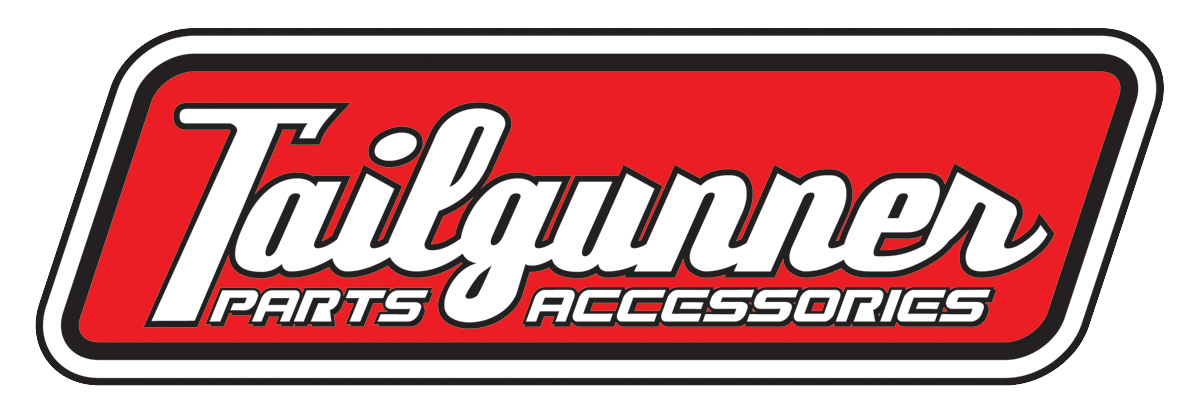“John Henry”
ITEM NUMBER: John Henry
“John Henry”
“A lot of what this bike is about is distillation,” explains Charlie Giordano, Tailgunner’s owner and the builder of the bike he calls “John Henry.”
“I wanted to create a motorcycle that emphasizes the emotions, reactions, and responses that only seem to exist when riding. The way to accomplish this, I reasoned, was to strip away every piece that was not mechanically necessary. I wanted to enhance the riding experience by refining the machine. Speedometer, gone. Blinkers and blinker switch, gone. Ditto on fenders, brake lights, plastic do-dads, etc. My thought was that all of these things that are built into modern motorcycles for reasons like styling, safety, and sales are ultimately detracting from what really exhilarates us. I wanted to liberate the rider from these superfluous distractions. For example, these days I see people with clocks on their handlebars. How can you appreciate your riding experience when you have a clock ceaselessly reminding you of the indefinite continued progress of existence? Talk about not being in the moment.”
That being said, there are a few exceptions to the extraneous: for instance, there is a right-side Hurst jockey shifter for changing gears, the horn from a 1927 Studebaker and countless hours of jeweling on the aluminum pieces. There is also a fully functional bottle of “elixir” mounted on the frame down-tube that is complete with fuel line and petcock. Mr. Giordano contends that although these features are not absolutely necessary to ride the bike, they support the primary objective. “Well, we have to involve a little culture if we’re going to reach motorcycle-riding Nirvana, don’t we?”
“John Henry” has been acquired by Mr. Bush and is currently enjoying life among other vehicles of provenance in Appleton, Wi.
“John Henry” is also a sort of reaction to the last 15 years of “Glam bikes.” Cosmetic refinement and endless clear coats of paint yield to copper patina and the dimpling of hand-hammered aluminum. A kind of Café Racer meets Rat Rod with a love child named Wabi-Sabi is underway here. And strangely enough, it all works. The merit of the overall design seems to trump the lack of cosmetic fixation. “If you consider the fine-art masters, what makes their work significant is the overall concept, originality, and design. Not their exacting execution of any particular technique. In keeping with that approach, I became free to concentrate on the overall shape and functionality of the bike and not worry too much about the superficial.”
But why did Mr. Giordano use a Honda VT1100 as his starting canvas and not the standard Harley platform?
“At Tailgunner,” explains Mr. Giordano, “our belief in, and practice of impartiality reaches beyond race, creed, and color and extends all the way to motorcycle brands. We love them all. I grew up riding metric bikes, and there are certain qualities about them that are great and others that are fun to bring out. One of the things we all love about a Harley-Davidson is the visceral effect it has on us. They just feel good. And one of the reasons for that is because of their old-fashioned simplicity. For instance, the Motor Company still uses pushrods rather than an overhead cam. Everyone knows that less weight equals faster movement. But every action has an equal and opposite reaction. And in Harley’s case, the action of moving to a more efficient, better performing engine design would sacrifice what really hooks us on the brand: its feeling. I find it peculiar that the metric manufacturers try to emulate Harley by way of staggering complication. They’d do much better by using the less-is-more approach. There is heart and soul in those metric bikes. They have the basic ingredients: powerful engines and two wheels. The problem with them lies in that we can’t feel their spirit because it’s buried in knickknacks and clutter. I literally took crates of material off this bike to allow its real motorcycle-ness to come out.
Why the name “John Henry”? Didn’t he build railroads, not motorcycles? “I chose the name John Henry because one of the things his legend, that great piece of American folklore, is about is Man vs. Machine, or more specifically, man’s triumph over machine. And that’s a lot of what this build was about. Not ‘machine’ as in this particular motorcycle, but ‘machine’ as in the need to rely on modern computer numerical control (CNC) equipment to build it. This bike was built using old-world techniques, hand tools, and hammers. A drill press was about as technological as I got. One of the greatest examples of fine art is the Sistine Chapel ceiling, and Michelangelo created it with a paintbrush, candles for light, and scaffolding. No computers were required. At Tailgunner we like to say, ‘In spite of using the most modern machines available, at the heart of our production are the most sophisticated devices ever created: the human hand and eye.’ I believe in that, and I think it shows in John Henry.
“John Henry” has been acquired by Mr. Bush and is currently enjoying life among other vehicles of provenance in Appleton, Wi.

































